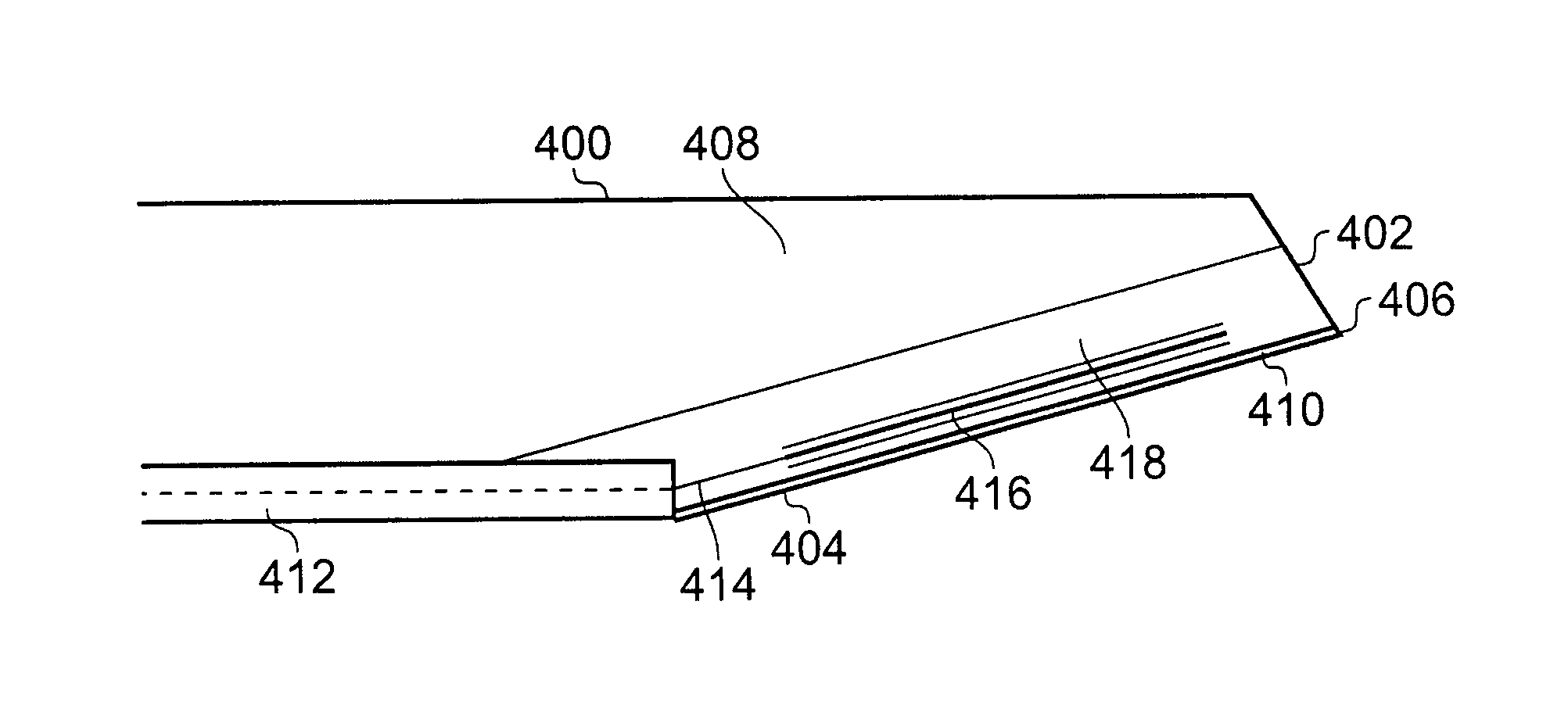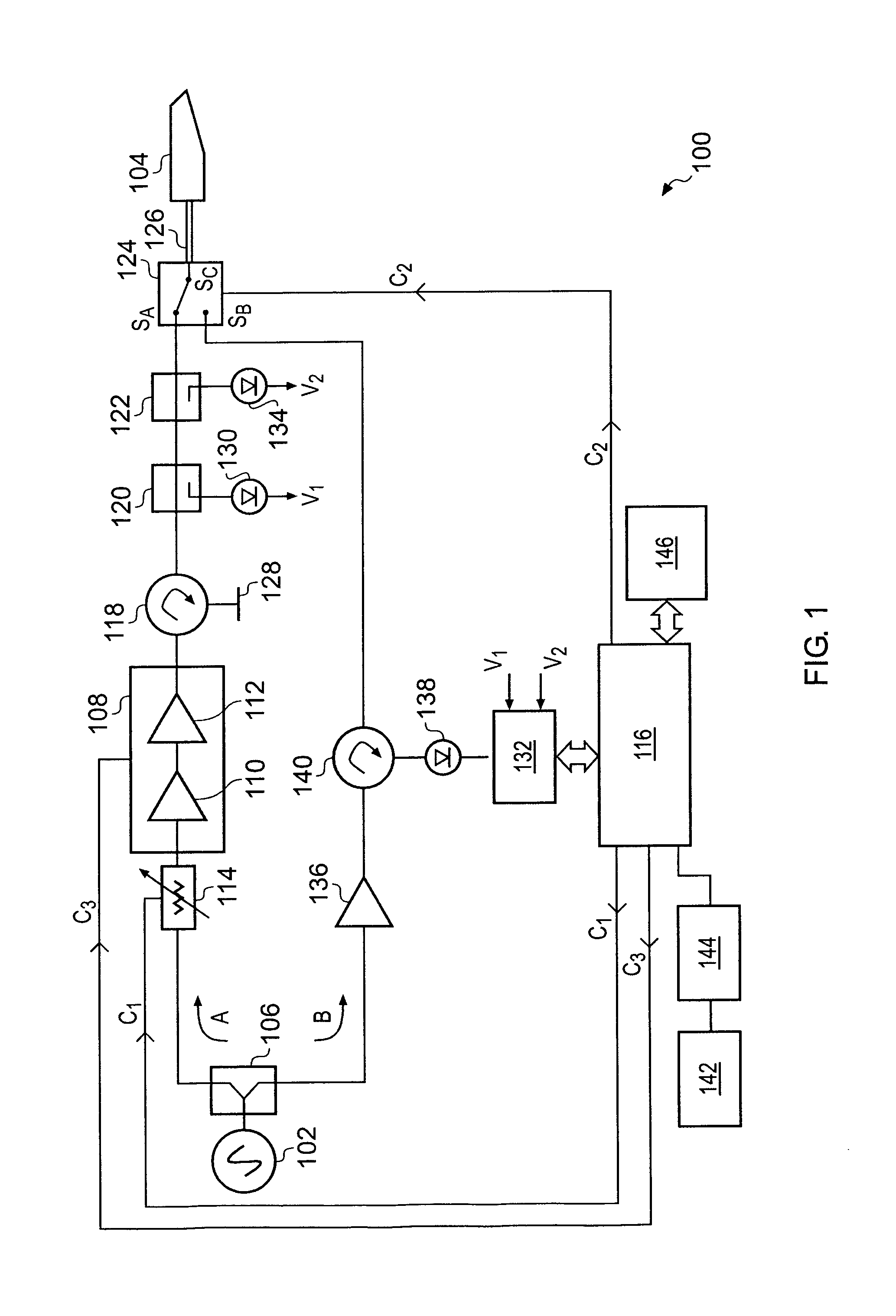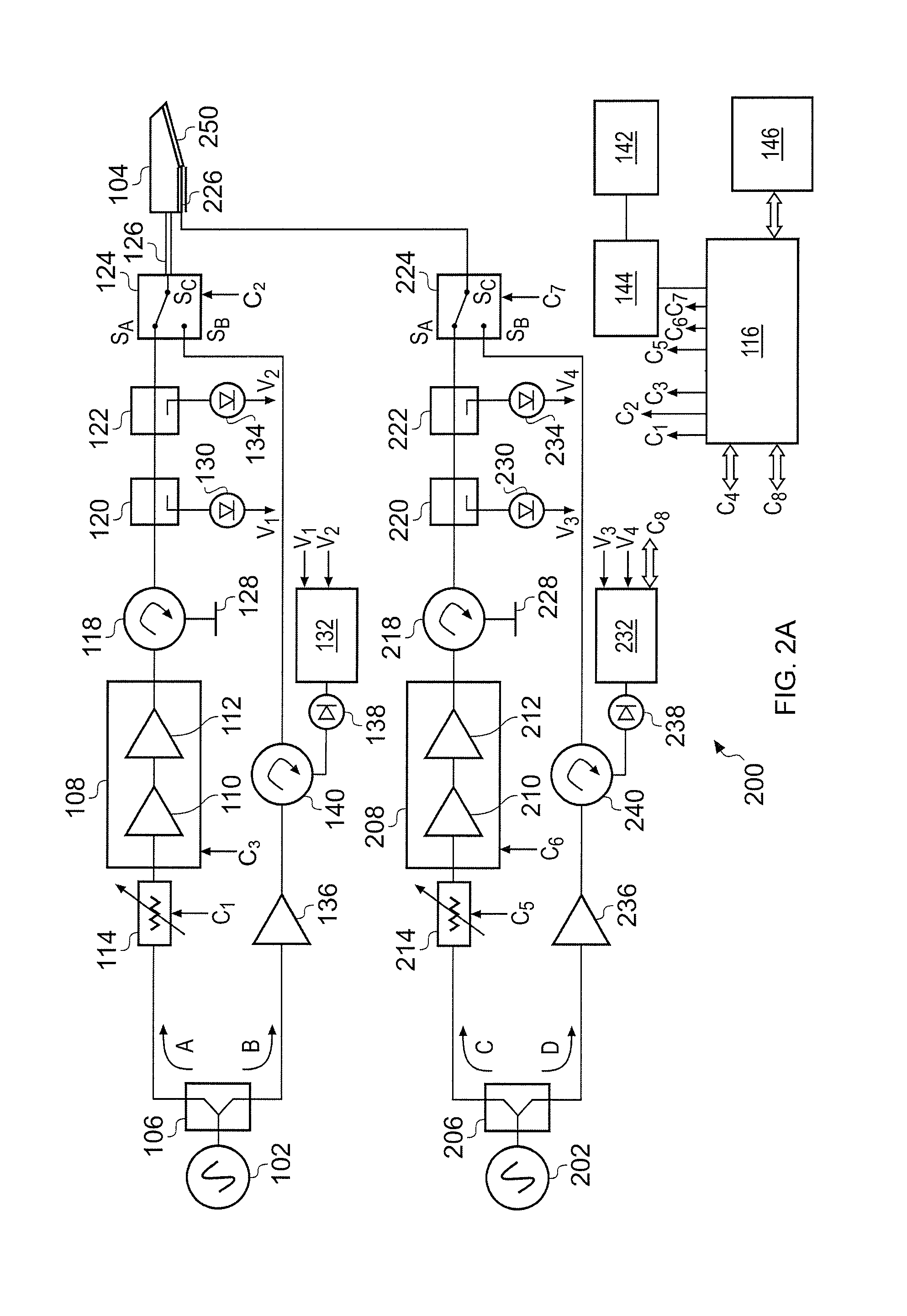Surgical resection apparatus
a surgical and resection technology, applied in the field of surgical resection apparatus, can solve the problems of most undesirable situation and tissue effect, and achieve the effects of reducing or preventing tissue ‘spitting’, high localised power level, and increasing power level
- Summary
- Abstract
- Description
- Claims
- Application Information
AI Technical Summary
Benefits of technology
Problems solved by technology
Method used
Image
Examples
first embodiment
[0152]FIG. 4 shows a surgical instrument 400 with two radiating structures. The surgical instrument 400 is a rectangular block of waveguide (i.e. dielectric) material whose end is formed into a scalpel shape, with upper and lower angled sharp edges 402, 404 meeting at a point 406. The lower angled edge 404 is longer than the upper angled edge and forms a main blade of the surgical instrument.
[0153]The block of waveguide is coupled directly to the transmission cable of the apparatus that carries microwave energy at a first (higher) frequency. Metallization 408 is provided on the surfaces of the block of waveguide except at a narrow region 410 adjacent to the main blade (i.e. around lower angled edge 404). The unmetallized region 410 therefore acts as an antenna (e.g. radiating blade) for the microwave energy at the first frequency.
[0154]A coaxial cable 412 is mounted along the bottom of the block of waveguide. This coaxial cable 412 is the transmission cable of the apparatus that car...
second embodiment
[0157]FIG. 5 shows a surgical instrument 500 capable of launching energy into tissue at two different microwave frequencies. Similarly to the instrument shown in FIG. 4, surgical instrument 500 comprises a block of waveguide 501 whose end is formed into a scalpel shape having upper and lower angled sharp edges 502, 504 which meet at a point 506. The lower angled edge 504 is longer and provides the main cutting blade of the instrument 500. A layer of metallization 508 is provided on the surfaces of the block of waveguide 501 except at a region 510 adjacent to the lower angled edge 504. Similarly to FIG. 4, the block of waveguide is coupled directly to the transmission cable (waveguide) 520 of the apparatus that carries microwave energy at the first (higher) frequency. The unmetallized region 510 therefore acts as an antenna (e.g. radiating blade) for the microwave energy at the first frequency.
[0158]In this embodiment, the entire layer of metallization 508 is used as a second antenna...
third embodiment
[0160]FIG. 6 shows a surgical instrument 600 capable of launching energy into tissue at two different microwave frequencies. Similarly to the instrument shown in FIG. 4, surgical instrument 600 comprises a block of waveguide 601 whose end is formed into a scalpel shape having upper and lower angled sharp edges 602, 604 which meet at a point 606. The lower angled edge 604 is longer and provides the main cutting blade of the instrument 600. A layer of metallization 608 is provided on the surfaces of the block of waveguide 601 except at a region 610 adjacent the lower angled edge 604. Similarly to FIG. 4, the block of waveguide is coupled directly to the transmission cable (not shown) of the apparatus that carries microwave energy at the first (higher) frequency. The unmetallized region 610 therefore acts as an antenna (e.g. radiating blade) for the microwave energy at the first frequency.
[0161]In this embodiment, a self-contained patch antenna 611 is mounted on layer of metallization ...
PUM
 Login to View More
Login to View More Abstract
Description
Claims
Application Information
 Login to View More
Login to View More - R&D
- Intellectual Property
- Life Sciences
- Materials
- Tech Scout
- Unparalleled Data Quality
- Higher Quality Content
- 60% Fewer Hallucinations
Browse by: Latest US Patents, China's latest patents, Technical Efficacy Thesaurus, Application Domain, Technology Topic, Popular Technical Reports.
© 2025 PatSnap. All rights reserved.Legal|Privacy policy|Modern Slavery Act Transparency Statement|Sitemap|About US| Contact US: help@patsnap.com



